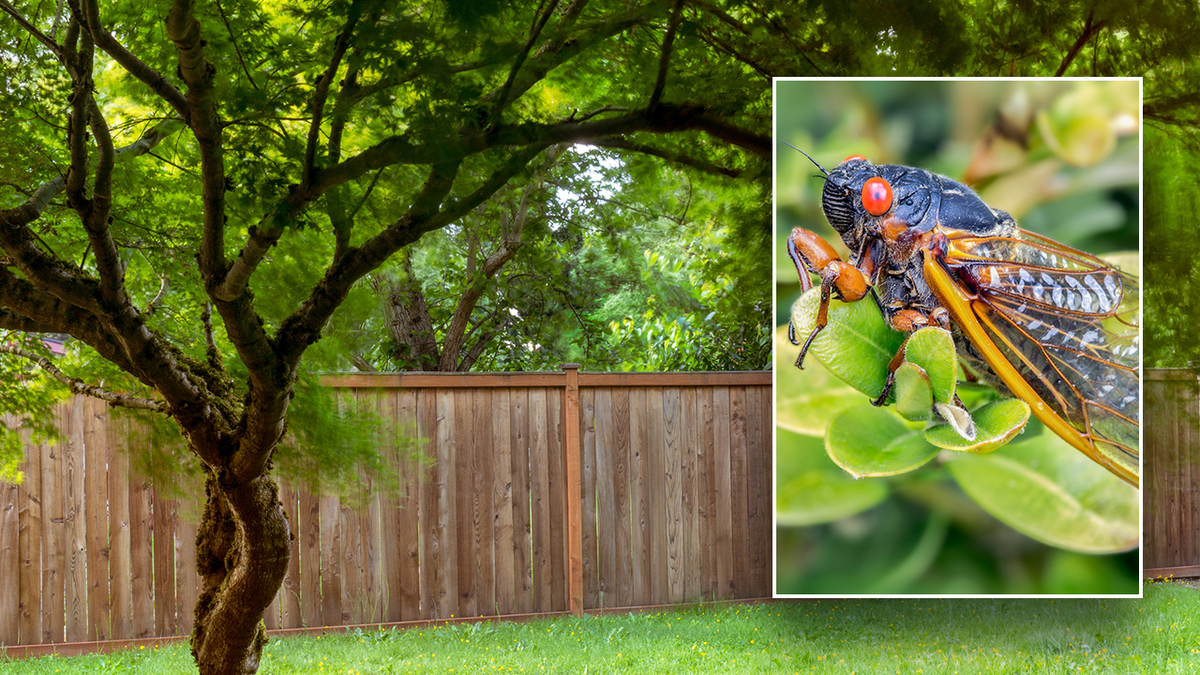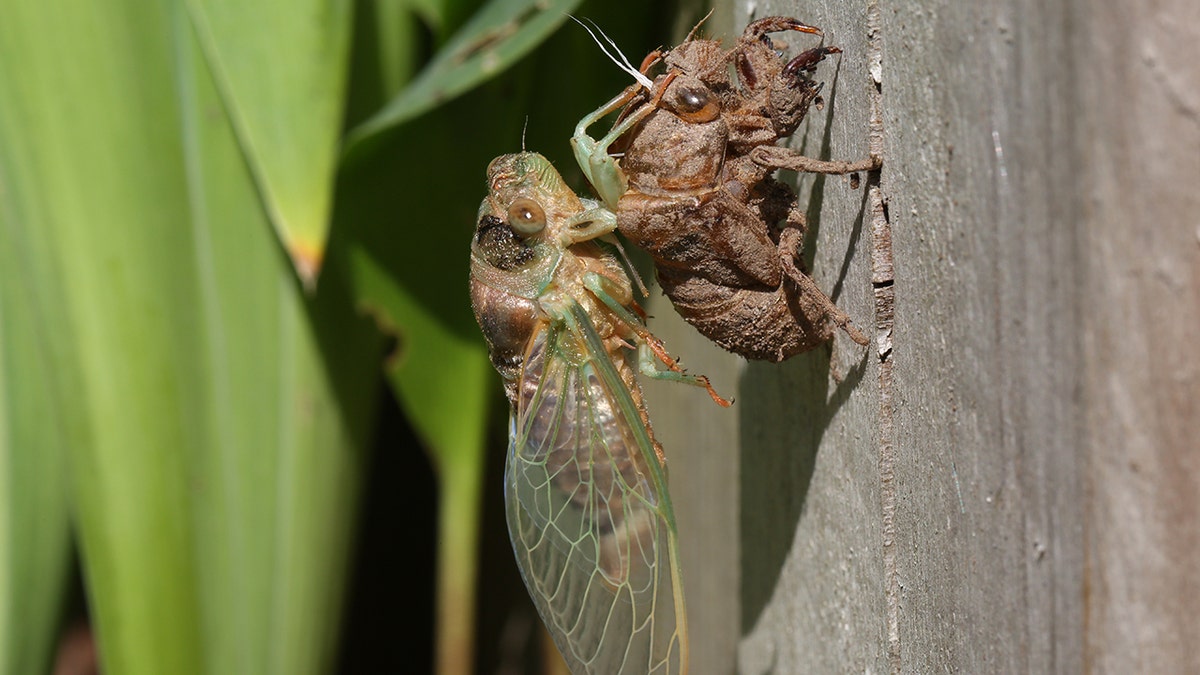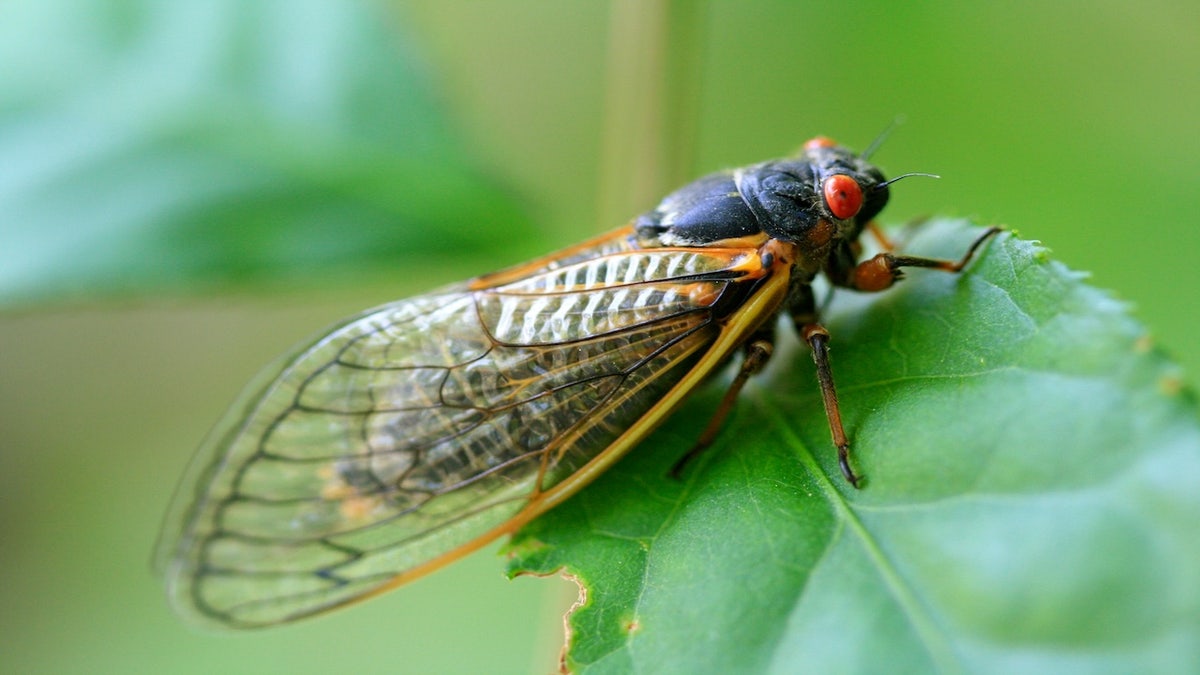A great cicada revival is expected to hit the U.S. this spring and summer.
Two cicada broods are making a simultaneous comeback for the first time in 221 years — with trillions of insects expected to emerge across the country.
The two groupings of cicadas, brood XIX and XIII, will emerge from the underground in 17 states across the country, according to Fox Weather.
RARE ‘SIMULTANEOUS EXPLOSION’ OF CICADAS EXPECTED FOR FIRST TIME IN 221 YEARS
Despite the large numbers of cicadas predicted to touch down, the bugs are “relatively harmless,” according to Ryan Fowley, a pest removal expert at Excel Pest Services in New Jersey.
“Because of how many of them there are, it’s not possible to completely remove cicadas from our yards,” he told Fox News Digital in an interview. “But fear not – because they aren’t harmful to us, our plants or crops.”
“They don’t bite or sting, have basically no defensive response at all whatsoever, and they’re mostly safe for our pets to eat, as long as they’re in their infancy when ingested.”
Larger adults have crunchy exoskeletons that could cause pets to choke, he added.
Americans are “very likely” to spot cicadas in their yards this spring, according to Fowley.
“That’s louder than a tractor or lawnmower, and even comparable to a jet plane during takeoff.”
The insects have black bodies measuring about 1.5 inches long, with wingspans of about 3 inches, he said.
ODD BUGS: FASCINATING FACTS ABOUT PRAYING MANTISES, WALKING STICKS AND OTHER UNIQUE-LOOKING INSECTS
Even if cicadas aren’t seen, they will definitely be heard, noted Fowley, as they’re “well-known for producing a chorus of mating calls that can exceed 100 decibels.”
He added, “That’s louder than a tractor or lawnmower, and even comparable to a jet plane during takeoff.”

Frank Meek, a technical services manager at Orkin, a pest control provider headquartered in Atlanta, confirmed to Fox News Digital that around mid-to-late May, two broods of cicadas will emerge from the ground.
Cicadas only live for about six weeks, according to Fowley, and are mostly inactive at night.
STRANGE CICADA FACTS TO KNOW BEFORE THEY EMERGE THIS SPRING
The insects are known for shedding their exoskeletons, leaving empty molted shells on the ground.
“There may be a lot of carcasses that build up around our plants and gutters, so you might want to sweep them out periodically and add them to your compost,” Fowley advised.

Perhaps the biggest concern regarding cicadas is their activity in trees, the expert said, as they “tend to feed on and lay eggs in new trees and shrubs.”
He warned, “If their decaying bodies are left to the wayside without being cleaned up, they can cause the surrounding foliage in your garden to decay as well.”
Homeowners can discourage cicadas from laying eggs in younger trees by covering them with mesh netting or cheese cloth throughout the spring and summer, Fowley suggested.
GOOD LUCK OMENS! WHY THE PRAYING MANTIS, BUTTERFLY AND LADYBUG ARE THOUGHT TO BRING GOOD THINGS
“Larger, existing trees in your yard might benefit from a tree wrap or guard to prevent them from climbing up and infesting the branches,” he said.
Wrapping the base of trees in foil or barrier tape, added Meek, may “prevent the nymph form of cicada from moving up the tree and becoming an adult.”

“It’s important to note that the adults are flying insects, and these barriers may not have any effect on them,” he said.
Another method of decreasing cicada numbers is to call in predators, Fowley said.
TERRIFYING CLOSE-UP ON AN ANT’S FACE GIVES HORROR-MOVIE MONSTERS A RUN FOR THEIR MONEY
“Encouraging predators, like birds, to come into the garden with bird feed could also be a great way of trying to keep cicada numbers down,” he said.
Despite popular belief, Meek emphasized that cicadas are “not considered pests.”

“Cicadas do not cause mass damage to plants and crops in their feeding habits,” he said.
“They can cause minor damage to young trees where they lay their eggs, but most trees recover quickly. Generally, [the insects are] noisy, but not dangerous or destructive.”
What to know about cicada broods
The reason cicadas are resurfacing this year is that many broods only come out to mate after “long periods of hibernation,” according to Fowley.
“In 2024, we will have two different broods of them emerging at the same time,” he said. “One brood appears every 17 years, mostly in Illinois, and another appears elsewhere in the Midwest and Southeast every 13 years.”
The 13-year cicada, also known as Brood 19, has “one of the largest geographical emergences, spanning 14 states,” Meek noted.

“The 17-year cicada (also called Brood 13) will emerge in five Midwestern states,” he said.
Two states, Illinois and Indiana, will experience emergences from both broods.
Cicadas in both broods are likely to appear in the following states, according to Fowley: Alabama, Arkansas, Georgia, Illinois, Indiana, Iowa, Kentucky, Louisiana, Michigan, Mississippi, Missouri, North Carolina, Oklahoma, South Carolina, Tennessee, Wisconsin and Virginia.
Fox News Digital’s Sydney Borchers contributed to this report.
For more Lifestyle articles, visit www.foxnews.com/lifestyle.
Read the full article here

